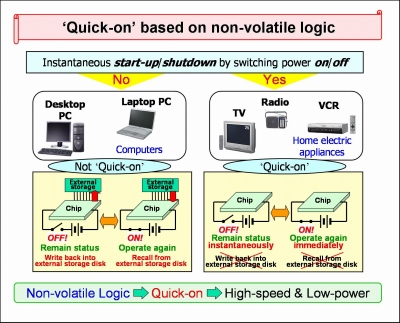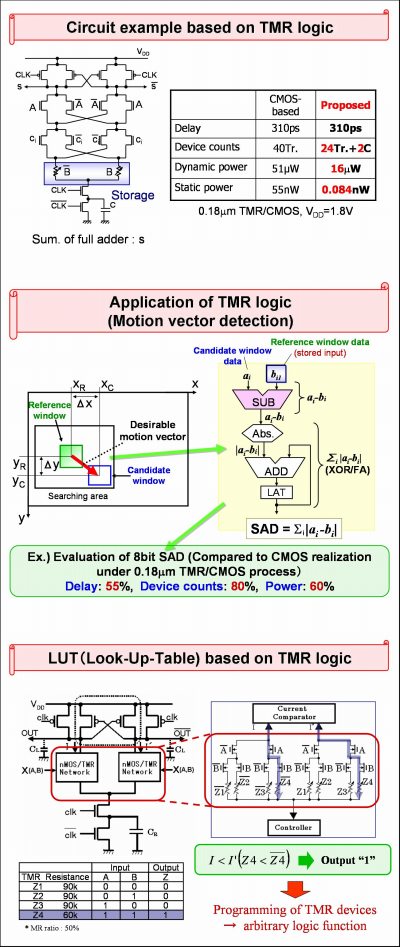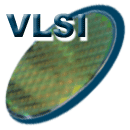|
Non-volatile Logic
Non-volatile devices, which can remain stored data without power supply, are generally used for ROM (Read-Only Memory) to store boot programs (the information to start up the computer and the basic instructions that operate it) in computers. One attractive feature is that it does not consume any static power while it remains stored data. 'Non-volatile logic' is a novel logic style that a non-volatile device is used for not only a non-volatile storage element such as ROM but also a logic-circuit element which is the basic component of a CPU and an entire system. We have firstly proposed the importance of research on the 'non-volatile logic' and worked actively on it. The non-volatile logic is suitable for realizing some VLSI systems which are superior to conventional CMOS-based implementation.
1.Quick-on system
Non-volatile logic makes it possible to distribute storage elements into a logic-circuit plane, and remain stored data even if the power supply is cut off. From this point of view, it is not necessary to write back data into an external hard disk when the power supply is cut off, and recall data from the hard disk when the power is supplied again. As the result, the operation can start quickly. We call this function 'quick-on'. In recent mobile devices, the power supply can not be cut off immediately even if the switch is turned off, because the data in the circuit must be written back into an external storage device such as a hard disk. The delay and power dissipation involved in the store/recall operation tend to increase as the system becomes complex and highly-functional. Non-volatile logic is one of the efficient logic styles to overcome such problems.

2.Fully-parallel system
In recent VLSI processors, the total performance has been restricted by the passive elements such as wiring rather than the active elements such as transistors. For example, the data transfer bottleneck between memory and logic circuit is one of the most serious problems in fully-parallel processing using current VLSI technology. In order to overcome the data transfer bottleneck and realize high-performance fully-parallel processing, we have proposed a novel circuit technique which is able to merge storage and logic function compactly at the device level. Since logic function is realized by using non-volatile storage device itself, both storage and logic function can be merged compactly. We have proposed several kinds of basic circuit using ferroelectric capacitors, and demonstrated their behavior by fabricated chips. We try to evaluate the performance of more large-scale applications and study other non-volatile logic circuit technique using other non-volatile devices such as TMR (Tunneling-Magneto-Resistive) device which is a basic element of an MRAM cell circuit. As an application of fully-parallel processing, we have implemented a CAM (Content-Addressable Memory) and evaluated its performance.

3.Dynamically reconfigurable system
Some of today's complex applications inherently require programmability. Often, the only way to make the system work in a reasonable amount of time is to build programmable components. One of the typical examples is FPGA (Field-Programmable Gate Array) which can program its function statically. On the other hand, dynamically reconfigurable system is a system whose function can be changed dynamically without changing its hardware structure. If the performance of the dynamically reconfigurable chips increases, the dynamically reconfigurable system can be applied to more and more fields. Since non-volatile logic has arbitrary logic function, it can realize dynamically reconfigurable VLSI which is able to switch its logic function instantaneously. Conventional dynamically reconfigurable VLSI has a large area overhead because it need control circuits and storage circuits to switch logic function and hold the status. We have researched to realize such a dynamically reconfigurable VLSI compactly by merging every function based on non-volatile logic.

Future Prospect
In order to extend our circuit technique in the real-world applications, it is also important to study and develop the following topics.
- Develop a reconfigurable VLSI with high performance like an ASIC
- Develop a low-cost VLSI by reusing masks
- Develop a standby-power-free VLSI which has quick-on function
|





